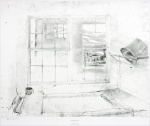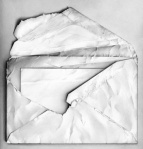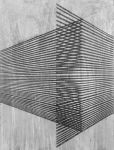Ubiquitous in every art school and artist’s tool box, the humble graphite drawing pencil has an interesting history. In the 16th century graphite came into use as a marking medium in England where large deposits were discovered and first put to use by farmers to mark sheep. The slippery properties of the mysterious dark substance also made it an ideal lubricant for releasing cannonballs from their molds. Hardware stores today still sell powdered graphite as a dry lubricant for locks and other machinery. Because of its crumbly, friable texture, the first graphite “pencils” were made by encasing the soft material in sheep skin. Germany developed the graphite stick in the 1600s. Originally graphite was thought to be some form of lead, which it is not, but the reference to pencil “lead” lives on. The modern wooden pencil dates to the 19th century when graphite began to be mixed with clay as a binder, a discovery that some attribute to Henry David Thoreau whose father was a pencil manufacturer. The hardness or softness of the composite graphite-clay mixture could be moderated by baking which led to the development of the familiar grading system we use today for drawing pencils. The tonal range of graphite makes it a uniquely beautiful drawing medium, distinguishable from chalks and charcoals by its characteristically silvery color. The variety of its effects can be seen in this selection of drawings from different artists and periods.
Tag Archives: Georgia O’Keefe
February 9, 2014 · 12:03 am
Graphite Drawings
Filed under Practice
Tagged as Alberto Giacometti, Andrew Wyeth, Antonio Lopez Garcia, Bruno Schulz, Cath Riley, Charles Bargue, Danny Jauregui, Edward Hopper, Francisco Faria, Georgia O'Keefe, Gerhard Richter, Giorgio Morandi, Graphite, Gwen John, James Ensor, Julia Clift, Rackstraw Downes, Robert Bauer, Robert Hannaford, Ryan Wurmser, Wayne Thiebaud, William Anastasi


































